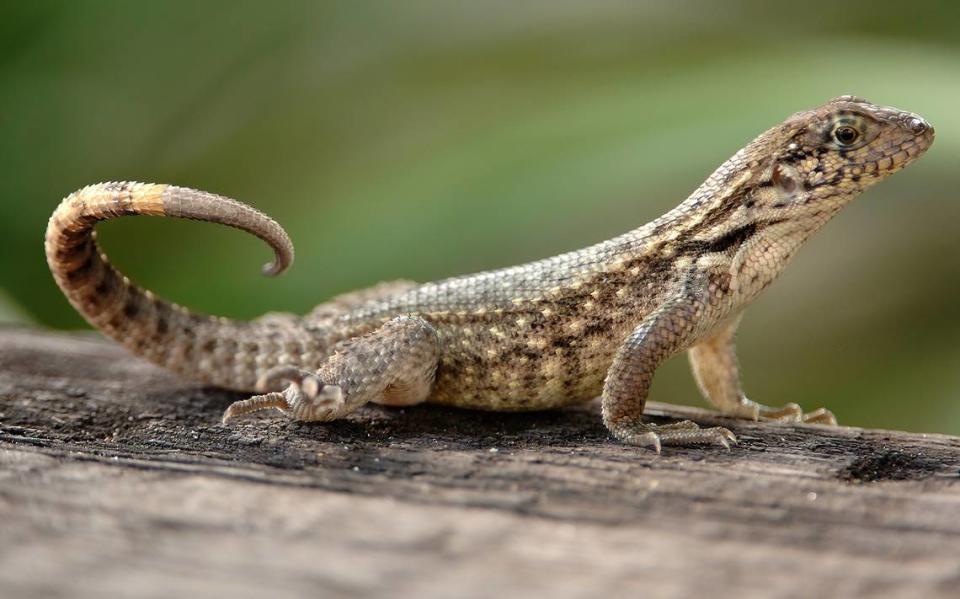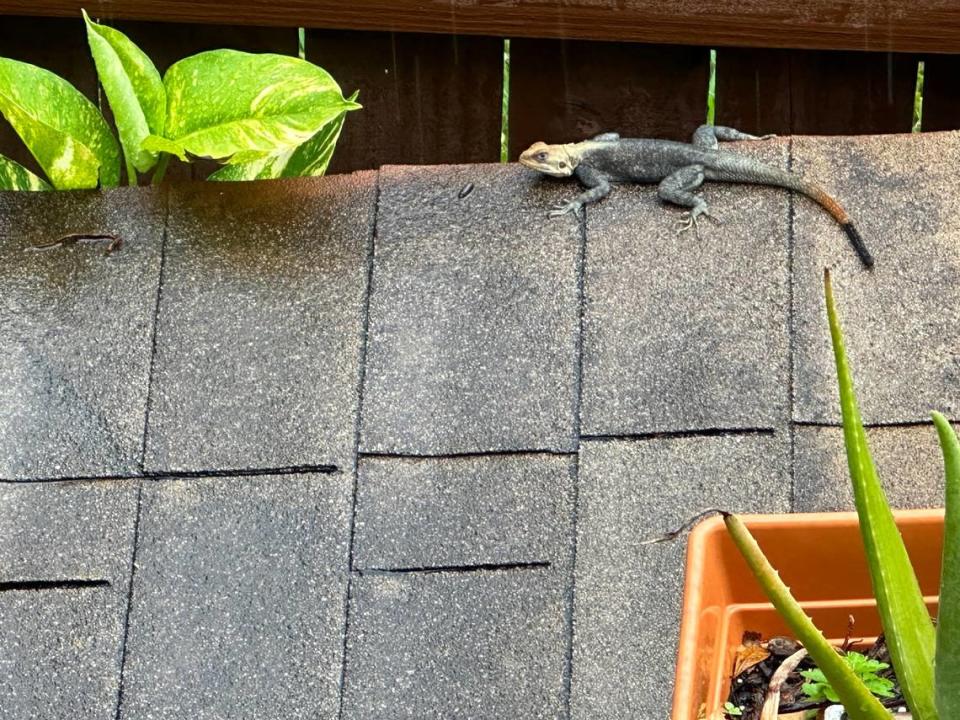Florida is the ‘Ellis Island of exotic animals.’ What are these creatures in your yard?
Feel like you’ve stepped into a rerun of “Game of Thrones” when you venture outdoors in South Florida these days?
It’s not your imagination. There are more lizards of a distinctive appearance and size than many of us may remember from our childhoods.
Northern curly tailed lizards — native to the Bahamas, Cuba and the Cayman Islands — are now Floridians, according to a recent University of Miami study. “Unprecedented rates of growth,” the report issued in July said.
The curly tailed lizards increased 22-fold in Miami-Dade between 2017 and 2022, according to Christopher Searcy, an associate professor of biology at the University of Miami College of Arts and Sciences.
“Over the past five years, they have really taken off and [the agamas] are now the fastest spreading reptile species in Miami-Dade,” according to Searcy, who led the study.
The rainbow agama lizard from West Africa, with its green and orange coloring from head to tail that makes it look like a UM Hurricanes mascot, is all over town.
The regular little lizards that scamper into our homes and the amphibious salamanders are still prevalent. But scientists are noting an influx of invasive lizards in our neighborhoods, like the curly tailed and rainbow varieties.
“Florida is the Ellis Island of exotic animals and this is especially true for reptiles in South Florida,” said Ron Magill, Zoo Miami’s communications director.
“In fact, there are more species of non-native lizards living in Florida than there are native ones,” Magill said.
Here’s what we know about them:

How many lizard species?
Fifty-eight established lizard species — most of them in South Florida — puts the state far ahead of the next most populous site in the United States, according to Searcy at UM.
Hawaii is in second place with 32 established species.
“South Florida has more non-native species across all taxonomic groups than any other continental region in the world,” Searcy said.
How did the lizards get to Miami?
“Most of these animals have arrived as the result of the pet industry,” Magill said. “They either escaped or were purposely released when owners realized that they were not the ‘pets’ they thought they would be.”
Calling the northern curly tailed lizard an “invader” really is a bit of a misnomer, according to Wild South Florida, an environmental group.
“It’s more like an invited guest that’s overstayed its welcome. In the 80-plus years since it first came to South Florida, it’s become probably the second most common exotic lizard in the region, behind only the seemingly ubiquitous brown anole,” Wild South Florida’s website says.
Miami nice. For lizards

When this influx of urban critters like the African rock agama and curly tailed lizard happens in the northern parts of the country, those animals usually don’t survive the first winter, Magill said.
“When it happens in South Florida, those animals feel as if they have found paradise and not only thrive, but as is evidenced in everything from pythons to iguanas, and now agamas and rock lizards, reproduce at an incredible rate,” he said.
That reproduction rate, propelled by the seductiveness of warmer weather, is apparently increasing given the population boom of the scaly things.
Are the lizards a threat to South Florida?
There haven’t been enough studies to indicate just how detrimental the lizards can be to the native environment, Magill and Searcy said.
“We know that these reptiles are generally larger and more aggressive than the native ones and can out-compete them for food. In some cases, like with the curly tails, the non-natives will actually eat the natives,” Magill said.
The exotic lizards eat native vegetation and other lizards and insects. The native brown anole, for example, is the South Florida resident that faces the most problems from the agamas.
“The bottom line is that I cannot think of anything positive that can result from these introductions,” Magill said, “but can list some potential negative outcomes such as reduction of native species and the spread of disease.”

